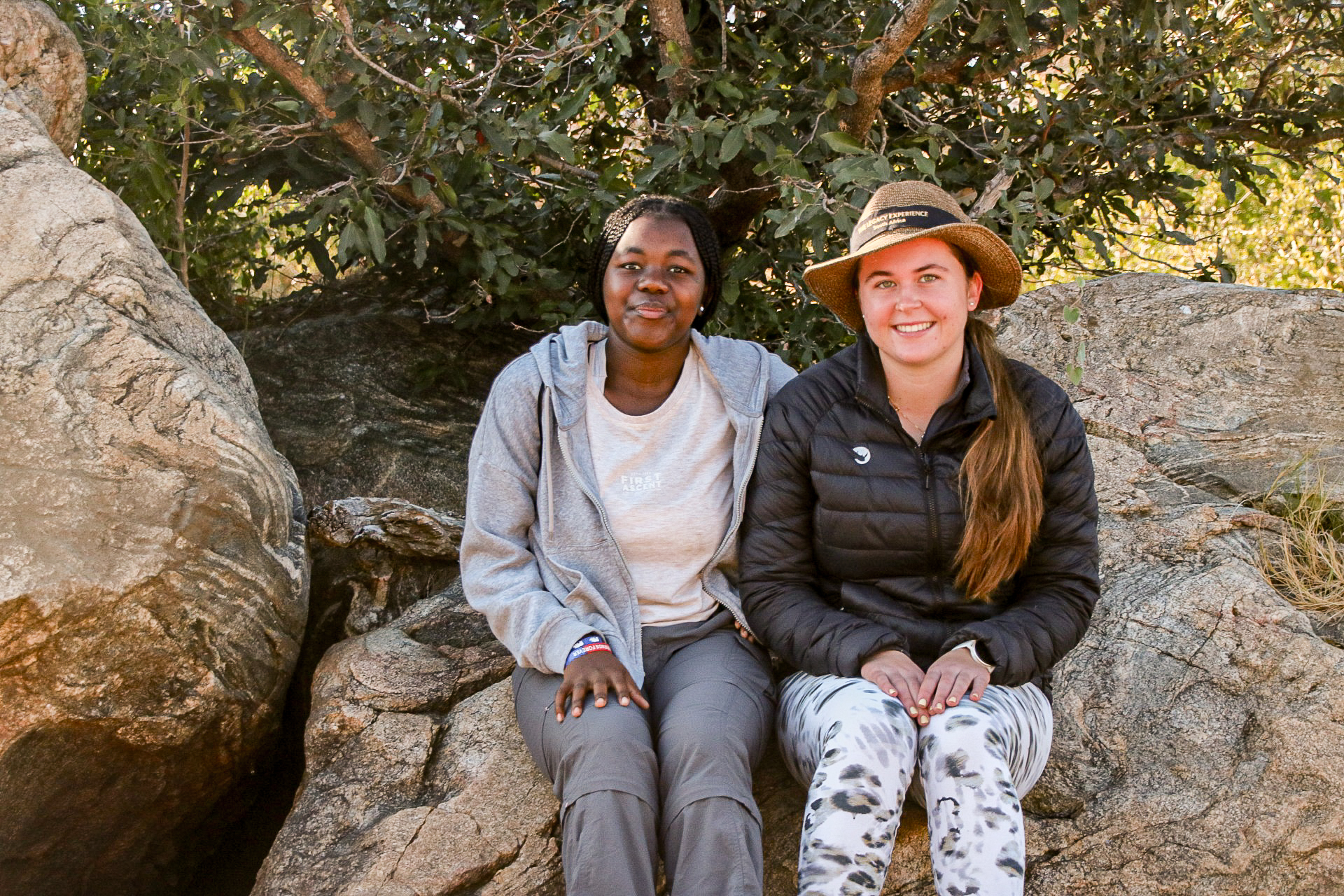Ground-Hornbill Project
Southern ground-hornbills are faunivorous birds, which means that their diets consist of both vertebrate and invertebrate prey, they possess competent digestive adaptations, and have distinct traits designed for pursuing and catching prey.
If you have ever witnessed ground-hornbills foraging, you will notice their eyes scanning the ground as they walk methodically through the bush, taking the occasional glance up into any trees and bushes they pass by. Their ability to spot incredibly camouflaged chameleons in a branch high above them is astounding, and we’ve seen how a peaceful foraging scene can quickly turn into a fluster of activity with the birds flying up into a tree to grab their prey, which is often followed by other squabbling group members trying to steal the kill.
Ground-hornbills hunt and consume whatever they can overpower, from insects to reptiles and even small mammals and other birds.When it comes to catching prey, they have incredibly large and powerful beaks used for digging and stabbing. However, they can be very dexterous and gentle with this large beak, especially when it comes to allopreening and consuming little mites and ticks from other group members’ bodies.
They have 15 cervical vertebrae–compared to other hornbills, which have 14–giving them the power and strength to carry large prey loads, collecting more and more as they forage overlong periods of time. Their generalist diet enables them to be successful and adaptable in varying environmental conditions. Additionally, like other hornbills, they obtain the water they need entirely from their diet and do not drink water, which is a great adaptation to living in semi-arid environments where water can be scarce at times.
When it comes to feeding offspring, more is always better!Since they are cooperative breeders, all group members contribute to raising a single nestling, but the contributions vary between individuals.We have been able to record prey items being provisioned to nestlings through many hours of camera trap footage and have found that adults provision the most, sub adults less, and juveniles from previous years, hardly at all (they often steal food from the nest when no one’s looking!). It’s likely that it takes a lot of skill and years of practice to become an adept hunter, so juveniles will still rely on adults for food fora couple of years.
When the nestling is small, group members will mainly provision small invertebrates which will be easier for the chick to consume, but we have also noticed a lot of very large and juicy solifuges being provisioned at this time.If larger prey is brought, then the female will thrash the prey around until it breaks apart, since they don’t possess a hooked beaklike raptors, which enables them to tear prey apart. As the chick grows rapidly, larger prey items are brought to the nest. Large snakes such as puff-adders seem to be a firm favourite, but we have also witnessed other bird species and even genets being provisioned. The nestling will swallow these items whole, often taking a few minutes until it is gulped down. The adult’s ability to multi-prey-load means that they can reduce the number of times they need to provision, bringing multiple prey items in one trip to the nest, rather than several. This reduces their energy expenditure during this demanding time and reduces the chances of predators finding the nest.
Every organism has its unique niche, allowing it to exist in its environment, creating a balanced ecosystem. The more we discover about the biology and behaviour of ground-hornbills, the more fascinated we become, and it allows us to answer fundamental questions contributing towards the conservation of this declining species.

Be the first to know
Keep up to date with our wildlife conservation efforts and progress in our Eco Children community, and be the first to know about lodge specials running in the reserve by signing up for our newsletter.





